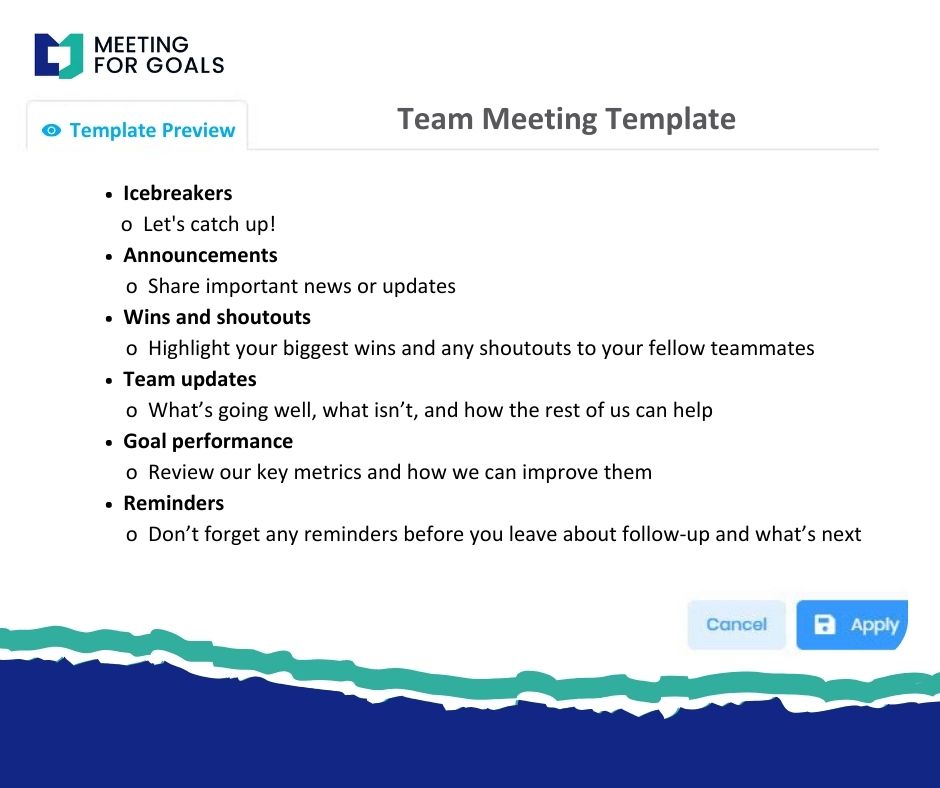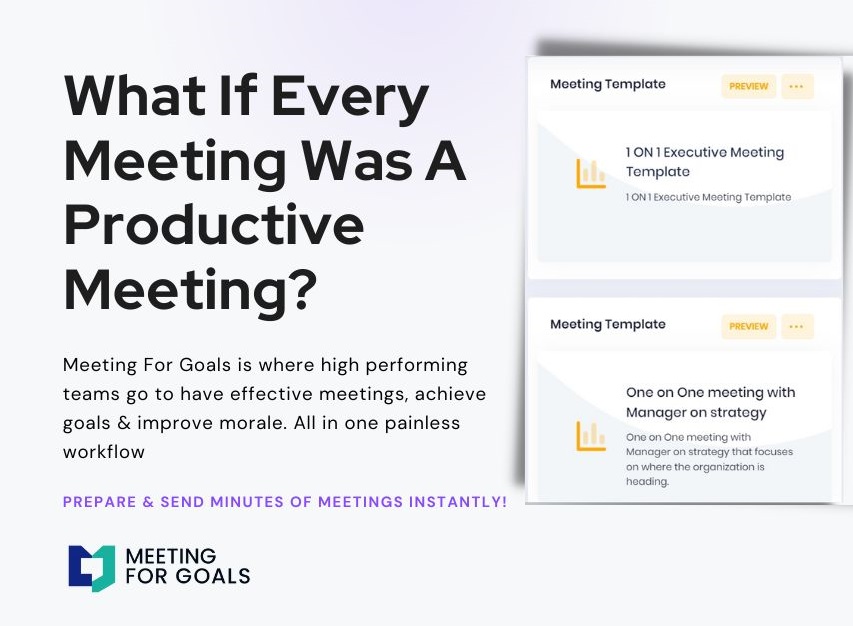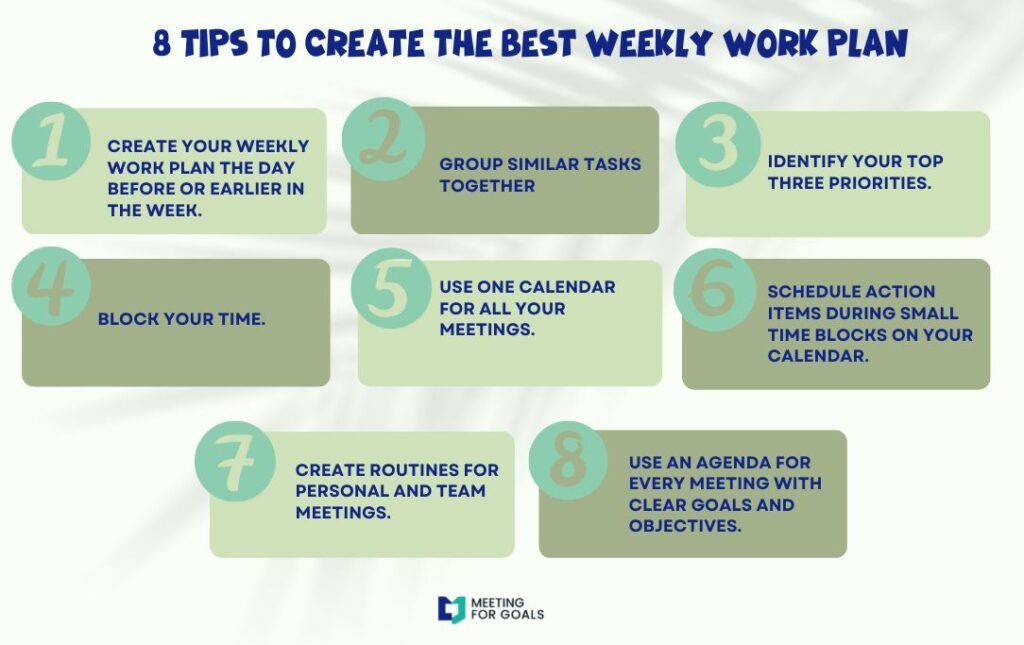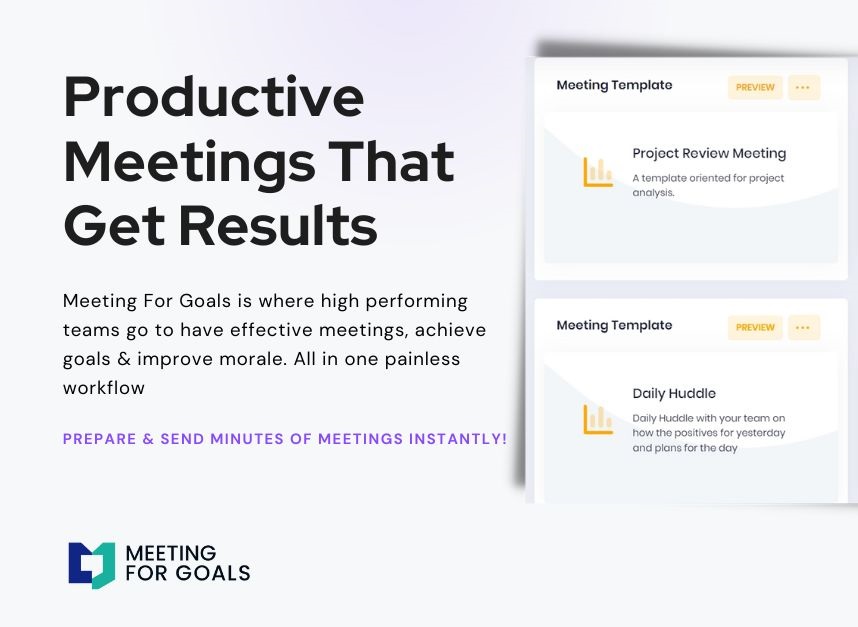Fun Work Outings: Strengthening Team Bonding and Boosting Productivity
I. Introduction
Building a strong, motivated team isn’t just about performance reviews or KPIs—it’s about people. In today’s competitive work environment, leaders at all levels are looking for ways to reduce burnout, improve collaboration, and keep top talent engaged. One of the most effective—and often underused—strategies? Fun work outings.
These aren’t just “nice-to-haves.” When done right, team outings are powerful tools for boosting morale, encouraging collaboration, and reinforcing company culture. Whether it’s a ropes course, a cooking class, or a simple game night, the right outing can energize your team and improve how they work together.
At Meeting For Goals, we specialize in helping teams not only run better meetings but also create meaningful, goal-aligned experiences—like team outings. Our platform makes it easy to plan, budget, and measure the impact of these events so they’re not just fun but also strategic.
If you’re looking to take your team culture to the next level, start by exploring our free meeting templates or sign up today to streamline your team-building efforts. In this article, we’ll break down the benefits of fun work outings, explore different types of activities, and show you how to plan and execute them effectively—with help from Meeting For Goals.
2 Minute Video
Watch a 2 minute demo of our meeting management software in action.
II. The Benefits of Fun Work Outings
A. Enhancing Team Bonding
In most offices, conversations revolve around tasks, deadlines, and deliverables. While that’s necessary, it doesn’t leave much room for building real human connections.
Fun work outings offer a chance to break out of that routine. When team members spend time together outside of work, they get to know each other as people—not just coworkers. This helps build trust and empathy, which are essential for effective collaboration.
For mid-sized companies (40–70 employees), this is especially important. Teams often work cross-functionally, and personal connections can smooth out communication and reduce friction.
According to Harvard Business Review, teams that trust each other perform better and are more resilient in the face of challenges. A single outing can create shared memories and experiences that form the foundation for long-term collaboration.
B. Boosting Morale and Motivation
Let’s face it—work can be stressful. Deadlines, meetings, and constant communication can take a toll. A well-timed outing can serve as a pressure release valve. It gives your team a chance to unwind and recharge.
But it’s more than just a break. Outings show that leadership values employees—not just for their output but as people. This kind of recognition can have a powerful impact on morale.
Motivated employees are more engaged, more productive, and more likely to stick around. When people feel appreciated, they’re more likely to go the extra mile.
Fun doesn’t have to mean frivolous. Even a simple lunch outing or trivia night can make a big difference in how your team feels about their work and each other.
C. Increasing Productivity
It might seem counterintuitive, but stepping away from work can actually help people work better. Outings give your team a chance to reset mentally and emotionally.
When they return to the office, they’re often more focused, more creative, and more collaborative. That’s because they’ve had a chance to step back, relax, and connect with colleagues in a meaningful way.
Better yet, the trust and camaraderie built during outings often translate into smoother communication and faster decision-making back at work.
With Meeting For Goals, you can track the impact of these outings by measuring engagement and goal alignment before and after the event. This helps ensure your investment is paying off—not just in smiles but in measurable results.
Ready to plan your next outing? Sign up here to get started.
Adding an Agenda
How to add an agenda instantly on Meeting For Goals.
III. Types of Fun Work Outings
Not every team is the same—and not every outing should be either. The best events are tailored to your team’s preferences, goals, and dynamics. Here are some popular categories to consider:
- A. Outdoor Activities
Outdoor activities are great for building trust, encouraging teamwork, and getting people out of their comfort zones.- Team-Building Challenges: Think ropes courses, scavenger hunts, or survival games. These activities require collaboration and problem-solving, which can strengthen your team’s ability to work together under pressure.
- Sports Events: Kickball, softball, or even a group hike can be a fun way to promote physical wellness and healthy competition. These events are energizing and often appeal to a wide range of personalities.
Outdoor outings are especially effective for teams that thrive on action and hands-on challenges. Plus, they often provide natural opportunities for leadership and collaboration to emerge.
- B. Creative Outings
For teams that prefer a more relaxed, expressive environment, creative outings are a great fit.- Art Workshops: Activities like painting, pottery, or even photography classes allow team members to tap into their creative side. These sessions can be both therapeutic and inspiring.
- Cooking Classes: Food brings people together. A shared cooking experience—like making pasta from scratch or learning to roll sushi—can be a delicious way to build teamwork and celebrate diversity.
Creative outings are ideal for sparking new ideas and helping team members see each other in a new light. They’re also great for introverts who may not enjoy high-energy outdoor events.
- C. Relaxing Activities
Sometimes, the best way to build team cohesion is to slow down and just enjoy each other’s company.- Wellness Retreats: Spa days, yoga sessions, or meditation workshops can help reduce stress and promote a healthy work-life balance. These outings show your team that their well-being matters.
- Casual Social Events: Game nights, movie screenings, or themed potlucks are low-pressure ways to bring people together. These events are budget-friendly and easy to organize.
Meeting For Goals makes it easy to gather team preferences and align your outing with your company’s goals. Whether your team prefers adventure or relaxation, our platform helps you plan an event that hits the mark.
IV. Planning a Fun Work Outing
A. Setting Clear Objectives
Before you book a venue or send out invites, take a step back. What do you want to achieve with this outing?
Maybe you’re onboarding new employees, celebrating a big win, or trying to improve communication between departments. Whatever your goal, defining it upfront ensures your outing is purposeful—not just a fun distraction.
Meeting For Goals helps you gather insights into your team’s needs and preferences. Use our platform to collect feedback, set objectives, and align your outing with broader business goals.
B. Budgeting and Resource Allocation
Let’s talk money. A great outing doesn’t have to break the bank—but it does need a budget.
Estimate costs for:
- Transportation
- Food
- Venue rental
- Facilitators
- Any materials you’ll need
Don’t forget to account for hidden expenses like insurance, overtime pay, or last-minute changes. With Meeting For Goals, you can manage your outing budget alongside your project and meeting budgets. This gives you full visibility and helps you stay on track.
Need help getting started? Check out our free meeting templates to plan your outing from start to finish.
C. Organizing Logistics
Once you’ve set your goals and budget, it’s time to get into the details. Pick a date that works for most of your team.
Use Meeting For Goals to send invites, track RSVPs, and manage the schedule. Assign responsibilities—like booking the venue or arranging transportation—to specific team members.
Clear communication is key. Let your team know what to expect, what to bring, and why the outing matters. The more informed they are, the more engaged they’ll be.
V. Making the Most of the Outing
A. Facilitating Engagement
You’ve planned the outing—now it’s time to make it count.
Start with a few icebreakers or team-building games to get everyone involved. These don’t have to be cheesy—just simple activities that encourage interaction and laughter.
Make sure the environment is inclusive. Accommodate dietary restrictions, physical limitations, and scheduling needs. When everyone feels welcome, they’re more likely to participate fully.
Encourage team members to step outside their usual cliques. Mix up seating arrangements or group assignments to help people connect with colleagues they don’t normally interact with.
B. Post-Outing Reflection
The outing doesn’t end when the event is over. Follow up with your team to gather feedback and reflect on the experience.
Use Meeting For Goals to send out a quick survey. Ask questions like:
- What did you enjoy most?
- Did the outing help you connect with colleagues?
- What would you change next time?
This feedback is gold. It helps you improve future outings and shows your team that their opinions matter.
Also, look for signs of impact. Are meetings more collaborative? Has communication improved? Use these insights to guide your broader team development strategy.
VI. Conclusion
Fun work outings aren’t just a break from the grind—they’re a smart investment in your team’s success.
They build trust, boost morale, and improve collaboration. For companies with 40–70 employees, where every team member plays a vital role, these benefits are even more powerful.
With Meeting For Goals, planning and executing these outings is easier than ever. Our platform helps you align events with company goals, manage budgets, track engagement, and ensure accountability.
So don’t wait. Start planning your next outing with purpose and strategy. Sign up today at https://app.meetingforgoals.com/TenantRegistration/Register and see the difference a well-executed outing can make.
Want to explore more ways to engage your team? Visit https://meetingforgoals.com for resources, tips, and tools designed to help your team thrive. And don’t miss our free meeting templates at https://meetingforgoals.com/meeting_templates to help you plan smarter.
We’d love to hear about your team’s favorite outings and the impact they’ve had. Share your stories in the comments below!




